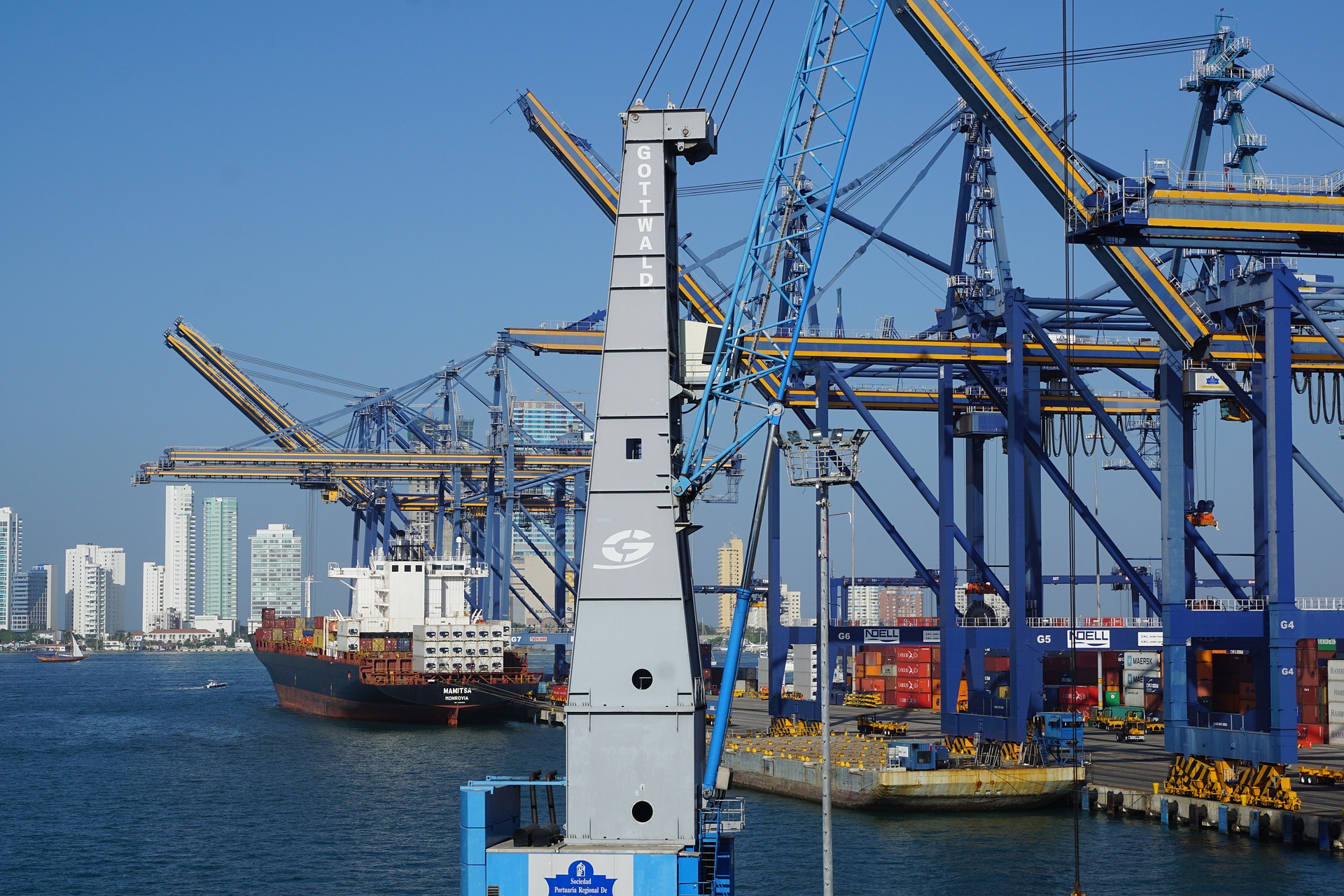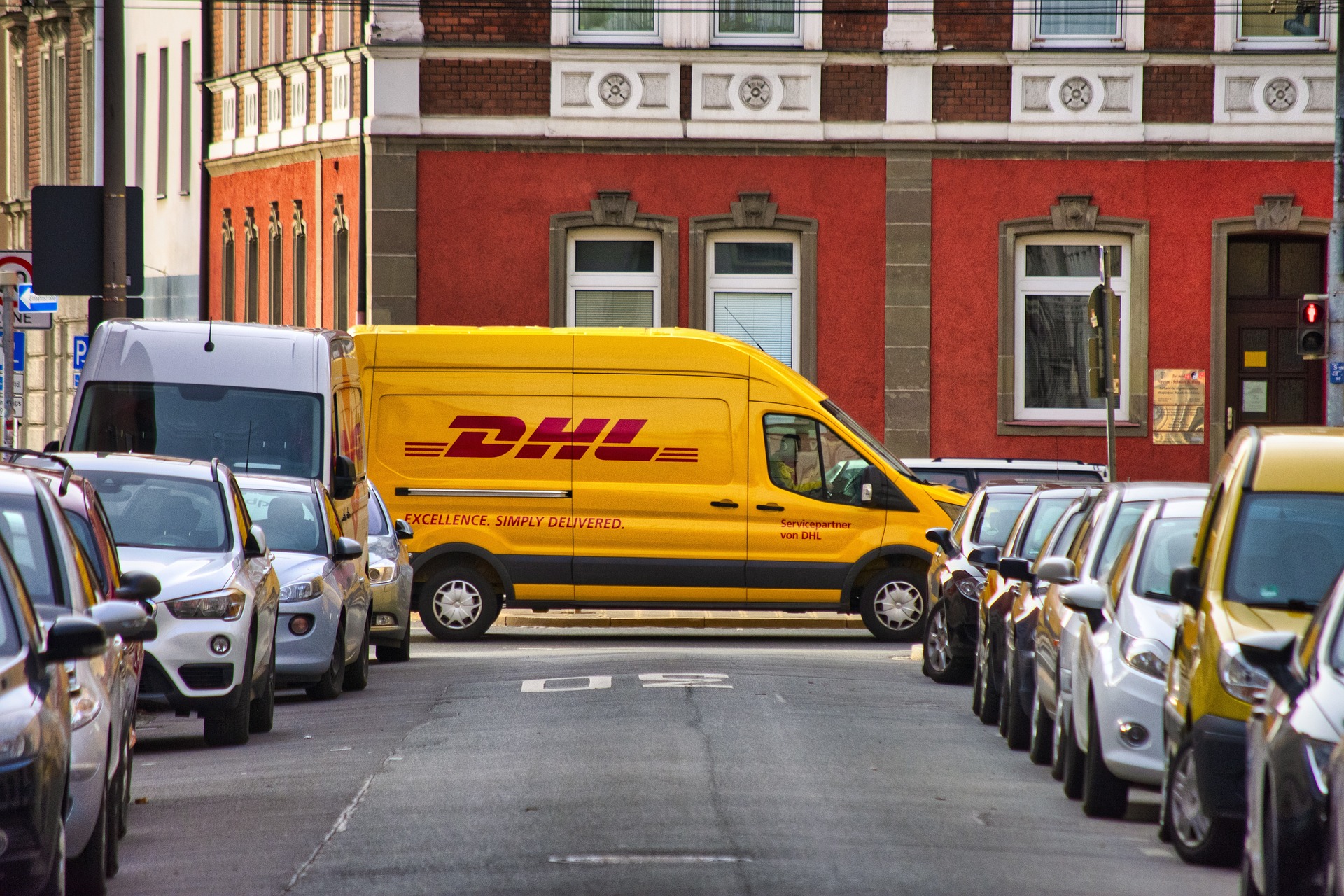
A Comprehensive Guide for Hassle-Free Shipping to Colombia
Shipping to Colombia is a crucial aspect of international trade and commerce, with the country being a key player in the global market. As the world’s 37th largest exporter and a rapidly growing economy, Colombia has become an essential trade partner for American businesses.
When it comes to shipping to Colombia, knowing the ins and outs can make all the difference. From understanding customs regulations to selecting the best shipping method, navigating international shipping can seem daunting.
In this guide, we will break down the essential information you need to know to ensure a smooth shipping experience to Colombia. Whether you are a seasoned importer or exploring new market opportunities, having a solid grasp of the shipping landscape in Colombia is vital for successful trade operations.
Methods of Shipping to Colombia
1. Air freight shipping
Air freight shipping is well-known for its speed and efficiency, making it an appealing choice for time-sensitive shipments to Colombia. Companies frequently choose air freight for transporting perishable goods, high-value items, or urgent deliveries. Common items shipped via air freight to Colombia include electronics, pharmaceuticals, fresh produce, and automotive parts.
Leveraging the extensive network of international airlines and cargo carriers, air freight provides direct flights from major US airports to Colombian cities like Bogotá, Medellín, and Cali. This swift transit time ensures that goods arrive promptly at their destination, reducing the risk of spoilage or delays.
Top 10 major airports for air freight shipping in Colombia
- El Dorado International Airport (BOG) – Bogotá
- José María Córdova International Airport (MDE) – Medellín
- Rafael Núñez International Airport (CTG) – Cartagena
- Ernesto Cortissoz International Airport (BAQ) – Barranquilla
- Alfonso Bonilla Aragón International Airport (CLO) – Cali
- Simón Bolívar International Airport (SMR) – Santa Marta
- Gustavo Rojas Pinilla International Airport (ADZ) – San Andrés
- Palonegro International Airport (BGA) – Bucaramanga
- Matecaña International Airport (PEI) – Pereira
- Camilo Daza International Airport (CUC) – Cúcuta
2. Sea freight shipping
Sea freight shipping is a vital component of global commerce, offering a cost-effective method for transporting large quantities of goods to Colombia. Although ocean shipping may take longer than air transport, it presents substantial cost advantages, making it a preferred option for bulk shipments, oversized items, and non-urgent deliveries.
Common items transported via ocean shipping to Colombia include machinery, vehicles, building materials, and consumer products. Key US ports like Miami, Houston, and New York serve as departure points for container ships heading to Colombian ports like Cartagena, Buenaventura, and Barranquilla.
Top 10 major ports for sea freight shipping in Colombia
- Port of Cartagena – Located on the Caribbean coast, the Port of Cartagena is one of the largest and busiest ports in Colombia. It serves as a key gateway for both import and export cargo, handling a diverse range of goods including containers, bulk cargo, and petroleum products.
- Port of Buenaventura – Situated on the Pacific coast, the Port of Buenaventura is Colombia’s principal port on the west coast. It is a crucial hub for trade with countries in the Americas and Asia, handling significant volumes of containerized cargo, agricultural products, and minerals.
- Port of Barranquilla – Located on the Magdalena River, the Port of Barranquilla is an important riverine port in Colombia. It serves as a key transportation link for goods moving inland and handles various types of cargo, including containers, automobiles, and agricultural products.
- Port of Santa Marta – Situated on the Caribbean coast, the Port of Santa Marta is a strategic port for both domestic and international trade. It specializes in handling containerized cargo, bulk commodities, and agricultural exports such as coffee and bananas.
- Port of Turbo – Located in the Gulf of Urabá, the Port of Turbo is an important port for trade with neighboring countries such as Panama. It handles a range of cargo types, including containers, bulk cargo, and petroleum products.
- Port of Tumaco – Situated on the Pacific coast, the Port of Tumaco is a key port for trade with countries in South America and beyond. It specializes in handling bulk cargo, particularly agricultural products such as coffee and bananas.
- Port of Cartíagena de Indias – This port is located in the city of Cartíagena, and it is one of the oldest ports in Colombia. It is strategically positioned on the Caribbean coast, making it an important gateway for trade with North and South America.
- Port of Coveñas – Situated on the Caribbean coast, the Port of Coveñas is primarily used for exporting crude oil and petroleum products. It is an essential hub for Colombia’s oil industry, facilitating the transportation of oil from inland production facilities to international markets.
- Port of Puerto Bolívar – Located in the department of La Guajira, the Port of Puerto Bolívar is a major port for exporting coal from Colombia’s mining regions. It handles large volumes of coal shipments destined for global markets, particularly in Asia and Europe.
- Port of La Guajira – Situated on the northern coast of Colombia, the Port of La Guajira is a growing port facility that handles various types of cargo, including containers, bulk cargo, and petroleum products. It serves as an important transportation link for goods moving between Colombia and neighboring countries such as Venezuela.
3. Courier services
Courier services, provided by well-known companies like FedEx, DHL, and USPS, are designed for businesses and individuals in need of fast shipping options to Colombia. These services guarantee door-to-door delivery, complete with tracking and insurance choices, giving both senders and recipients peace of mind.
Courier services are especially favored for sending small packages, important documents, and time-critical shipments to Colombia. Whether it’s legal papers, product samples, online orders, or personal belongings, courier services offer a dependable and efficient method for sending items internationally.
- USPS: USPS offers international shipping services to Colombia, including First-Class Package International Service, Priority Mail International, and Priority Mail Express International, with varying transit times and pricing options. Delivery can take 5-10 days to Colombia.
- FedEx: FedEx provides reliable shipping solutions to Colombia, including FedEx International Priority and FedEx International Economy, ensuring fast and secure delivery of packages and freight. Faster and more reliable than USPS with a 2-5 day regional delivery available.

- DHL: DHL offers expedited shipping services to Colombia through DHL Express, delivering parcels and documents with speed and efficiency, supported by a robust global network. A solid affordable express option with robust infrastructure across Colombia.
Car shipping to Colombia from USA
As the automotive industry continues to boom in Colombia, more and more American car exporters and individuals are looking to ship vehicles to this South American nation. Whether you’re a manufacturer sending a full container of cars or a private party relocating with your personal vehicle, understanding the shipping methods and logistics is crucial.
1. RORO shipping to Colombia from USA
RORO (Roll-On, Roll-Off) car shipping for larger vehicle shipments such as new or used car lots, is the way to go. In this method, cars can be driven (or towed) onto specialized RORO carrier vessels designed with ramps to allow rolling cargo on and off. This avoids the need for additional handling and containerization.
Many RORO lines transit from ports in Florida, New York/New Jersey, and Houston. Full shipments are cost-effective, but you can also book space for single car units.
Process of shipping a car to Colombia via RORO
- Preparation: Before shipping your car, ensure it is in good working condition and meets all Colombian import requirements. This may include obtaining the necessary documentation such as the vehicle’s title, registration, and insurance.
- Booking: Contact a reputable RORO shipping company that operates routes between the USA and Colombia. They will assist you with booking the shipment and provide guidance on the required paperwork.
- Delivery to port: Deliver your vehicle to the designated port of departure on the scheduled date. Make sure it is clean and free of personal belongings to comply with customs regulations.
- Loading: Once at the port, your vehicle will be driven onto the RORO vessel by professional handlers. It will be securely fastened and protected for the duration of the voyage.
- Transit: The vessel will sail from the port of origin in the USA to the port of destination in Colombia. Throughout the journey, your vehicle will remain safely stowed on board.
- Customs clearance: Upon arrival at the Colombian port, your vehicle will undergo customs clearance procedures. This may include inspection and verification of documentation by customs officials.
- Pick-Up: Once customs clearance is complete, you can collect your vehicle from the port. Be sure to have all the necessary paperwork and payment for any applicable customs duties and taxes.
2. Container shipping of cars to Colombia from USA
For individuals, car enthusiasts, or dealers sending fewer vehicles, containerized shipping through “LOLO” (lift-on, lift-off) cargo is preferable to RORO.
You have the option of:
FCL (Full Container Load) shipping to Colombia
FCL shipping involves the exclusive use of a shipping container to transport one or more cars from the USA to Colombia. In FCL shipping, the entire container is dedicated to the shipment of the vehicles, providing added security and minimizing the risk of damage during transit.
Best for 2-4 vehicles, your dedicated 20ft or 40ft container provides secure, door-to-door transport.
LCL (Less than Container Load) shipping to Colombia
LCL shipping is utilized when the volume of goods, including cars, does not fill an entire shipping container. In LCL shipping, multiple shipments from different senders are consolidated into a single container before being shipped to the destination port in Colombia. This allows for cost-effective transportation of smaller quantities of vehicles and goods.
Economical for a single car, your vehicle shares a consolidated container.
In both cases, your cars are carefully loaded into the container at origin and removed upon arrival at the destination port in Colombia. Always properly secure vehicles within the container.
Other logistics to consider before car shipping to Colombia
Working with an experienced freight forwarder that specializes in vehicle shipping is highly recommended, regardless of transport mode. They can assist with paperwork like titles/registrations and customs clearance, arrange insurance coverage, pick-up/delivery, and even facilitate legal importation of foreign plated vehicles.
Colombian ports assess various fees on vehicle shipments including terminal handling charges, customs processing fees, and taxes based on age/value. Factor these costs into your logistics budget. Finally, leave ample buffer room for any potential delays due to port congestion or inspections.
Whether shipping a single car or a consignment of luxury SUVs to Colombia, careful planning and execution is needed. Use reputable shipping companies and partners to avoid logistical nightmares on the ground in Colombia. With the right approach, your precious automotive cargo will arrive safely and on-time!
Customs regulations
Imports and exports for Colombia
Here is an extensive list of major imports and exports for Colombia:
Top imports to Colombia:
- Machinery and equipment
- Vehicles and vehicle parts
- Electrical machinery and equipment
- Plastics and plastic articles
- Iron and steel
- Pharmaceutical products
- Organic chemicals
- Mineral fuels and oils
- Optical/medical instruments
- Paper and paperboard
- Cereals
- Cotton
- Aircraft and spacecraft
- Fertilizers
- Industrial machinery
- Rubber and rubber articles
Top exports from Colombia:

- Petroleum oils and crude oil
- Coal (thermal and metallurgical)
- Gold
- Coffee
- Bananas and plantains
- Flowers (cut flowers and flower buds)
- Precious stones and metals
- Sugar and sugar confectionery
- Live animals (pigs, bovine, etc.)
- Aluminum and aluminum articles
- Plastics and plastic articles
- Iron and steel products
- Apparel and clothing accessories
- Edible fruits and nuts
- Fish and crustaceans
- Wood and wood articles
- Tobacco and tobacco products
- Works of art and antiques
- Salt, sulfur, stone, cement
- Vegetable products
- Aircraft and spacecraft
- Electrical machinery
- Coffee and tea extracts
- Musical instruments
- Footwear
Colombia has a diverse trade profile exporting significant amounts of natural resources like oil, coal and gold as well as major agriculture products like coffee, bananas, flowers and sugar. Its imports span machinery, vehicles, electronics and many finished industrial and consumer goods.
FAQ
Q: What are some common items that are restricted or prohibited from being shipped to Colombia?
A: When shipping to Colombia, it’s essential to be aware of the country’s import regulations. Common items that are restricted or prohibited from being shipped to Colombia include firearms and ammunition, narcotics and illegal drugs, counterfeit goods, hazardous materials, and certain agricultural products.
It’s advisable to check with Colombian customs authorities or your shipping provider for a comprehensive list of restricted items to avoid any complications during the shipping process.
Q: How can I estimate the customs duties and taxes I will need to pay when shipping goods to Colombia?
A: Estimating customs duties and taxes for shipments to Colombia involves several factors, including the declared value of the goods, their classification under the Colombian Harmonized System (HS) codes, and any applicable trade agreements or preferential tariff rates.
To estimate customs duties and taxes accurately, you can consult with Colombian customs authorities or utilize online resources provided by customs brokers or shipping companies. Additionally, some shipping providers offer duty and tax estimation tools to help you calculate the potential costs associated with your shipment.
Q: Are there any specific packaging requirements I should be aware of when shipping to Colombia?
A: Yes, when shipping to Colombia, it’s important to adhere to specific packaging requirements to ensure the safety and security of your goods during transit. Colombian customs authorities may require shipments to be properly packaged and labeled with detailed information, including the contents, quantity, weight, and value of the goods.
Additionally, certain goods may require special packaging or labeling to comply with Colombian regulations, such as perishable items, hazardous materials, or fragile goods. It’s advisable to consult with your shipping provider or Colombian customs authorities for guidance on packaging requirements specific to your shipment.
Q: What steps can I take to mitigate shipping delays and ensure timely delivery to Colombia?
A: To mitigate shipping delays and ensure timely delivery to Colombia, there are several steps you can take:
- Plan ahead: Allow sufficient time for the shipping process, including customs clearance and transit.
- Provide accurate documentation: Ensure all shipping documents, including invoices, packing lists, and certificates of origin, are complete and accurate.
- Work with reputable shipping providers: Choose a reliable shipping provider with experience in shipping to Colombia and a proven track record of timely delivery.
- Monitor your shipment: Stay informed about the status of your shipment by tracking it online or through communication with your shipping provider.
- Address any customs issues promptly: If there are any issues or discrepancies with customs clearance, address them promptly to avoid delays in processing your shipment.
- Communicate with your recipient: Keep your recipient in Colombia informed about the shipment and provide them with any necessary documentation or information to facilitate the delivery process.
